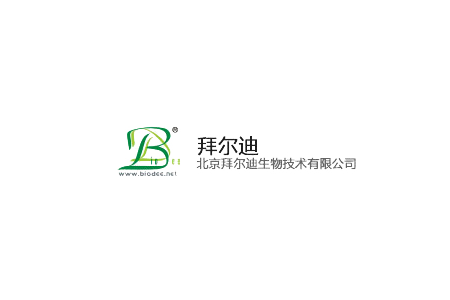

貨號(hào)
產(chǎn)品規(guī)格
售價(jià)
備注
BN40233R-100ul
100ul
¥2470.00
交叉反應(yīng):Human,Rat(predicted:Mouse) 推薦應(yīng)用:WB,IHC-P,IHC-F,IF,ELISA
產(chǎn)品描述
| 英文名稱 | phospho-Ron (Tyr1238+Tyr1239) |
| 中文名稱 | 磷酸化原癌基因c-Met相關(guān)酪氨酸激酶抗體 |
| 別 名 | MST1R(phospho S1238+S1239); Ron (phospho Tyr1238 + Tyr1239); Ron (phospho Y1238 + Y1239); c met related tyrosine kinase; CD136; CD136 antigen; CDw136; Macrophage stimulating 1 receptor (c met related tyrosine kinase); Macrophage stimulating 1 receptor; Macrophage stimulating protein receptor alpha chain; MACROPHAGE STIMULATING PROTEIN RECEPTOR; Macrophage stimulating protein receptor beta chain; Macrophage-Stimulating 1 Receptor (MST1R); Macrophage-stimulating protein receptor beta chain; MSP receptor; Mst1r; MST1R variant RON30; MST1R variant RON62; p185 RON; p185-Ron; Protein-tyrosine kinase 8; PTK 8; ptk8; PTK8 protein tyrosine kinase 8; Recepteur d’origine nantais (RON); RON; RON protein tyrosine kinase; RON variant E2E3; RON_HUMAN; Soluble RON variant 1; Soluble RON variant 2; Soluble RON variant 3; Soluble RON variant 4; Stem cell derived tyrosine kinase. |
| 產(chǎn)品類型 | 磷酸化抗體 |
| 研究領(lǐng)域 | 細(xì)胞生物 信號(hào)轉(zhuǎn)導(dǎo) 細(xì)胞周期蛋白 激酶和磷酸酶 |
| 抗體來源 | Rabbit |
| 克隆類型 | Polyclonal |
| 交叉反應(yīng) | Human, Rat, (predicted: Mouse, ) |
| 產(chǎn)品應(yīng)用 | WB=1:500-2000 ELISA=1:5000-10000 IHC-P=1:100-500 IHC-F=1:100-500 Flow-Cyt=1μg/Test ICC=1:100-500 IF=1:100-500 (石蠟切片需做抗原修復(fù)) not yet tested in other applications. optimal dilutions/concentrations should be determined by the end user. |
| 分 子 量 | 30/119/150kDa |
| 細(xì)胞定位 | 細(xì)胞膜 |
| 性 狀 | Liquid |
| 濃 度 | 1mg/ml |
| 免 疫 原 | KLH conjugated synthesised phosphopeptide derived from human MST1R around the phosphorylation site of Tyr1238+Tyr1239:E(p-Y)(p-Y)SV |
| 亞 型 | IgG |
| 純化方法 | affinity purified by Protein A |
| 儲(chǔ) 存 液 | 0.01M TBS(pH7.4) with 1% BSA, 0.03% Proclin300 and 50% Glycerol. |
| 保存條件 | Shipped at 4℃. Store at -20 °C for one year. Avoid repeated freeze/thaw cycles. |
| PubMed | PubMed |
| 產(chǎn)品介紹 | MST1R/Ron, a HGF Receptor/MET-type protein kinase, mediates the biological activities of macrophage-stimulating protein (MSP), a multifunctional cytokine that regulates cell adhesion, motility, growth, and survival. The protein is a membrane-spanning, disulfide-linked heterodimer, which results from cleavage of a glycosylated precursor into 35-kD (alpha) and 150-kD (beta) subunits. Ligand binding results in tyrosine phosphorylation of the beta chain. In knockout studies, MST1R/RON (-/-) mice failed to survive past the periimplantation period. The MST1R/RON gene has been mapped to 3p21, a region of frequent deletion or mutation in small cell lung and renal carcinoma, and has been implicated in the progression of several epithelial cancers. Ron expression has been documented in many normal human tissues. ESTs have been isolated from several tissue libraries, including normal colon, mouth, prostate, and testis and cancerous colon, prostate, stomach, and uterus. Function: Receptor tyrosine kinase that transduces signals from the extracellular matrix into the cytoplasm by binding to MST1 ligand. Regulates many physiological processes including cell survival, migration and differentiation. Ligand binding at the cell surface induces autophosphorylation of RON on its intracellular domain that provides docking sites for downstream signaling molecules. Following activation by ligand, interacts with the PI3-kinase subunit PIK3R1, PLCG1 or the adapter GAB1. Recruitment of these downstream effectors by RON leads to the activation of several signaling cascades including the RAS-ERK, PI3 kinase-AKT, or PLCgamma-PKC. RON signaling activates the wound healing response by promoting epithelial cell migration, proliferation as well as survival at the wound site. Plays also a role in the innate immune response by regulating the migration and phagocytic activity of macrophages. Alternatively, RON can also promote signals such as cell migration and proliferation in response to growth factors other than MST1 ligand. Subunit: Heterodimer of an alpha chain and a beta chain which are disulfide linked. Binds PLXNB1. Associates with and is negatively regulated by HYAL2. Interacts when phosphorylated with downstream effectors including PIK3R1, PCLG1, GRB2 and GAB1. Interacts with integrin beta1/ITGB1 in a ligand-independent fashion. Subcellular Location: Membrane; Single-pass type I membrane protein. Tissue Specificity: Expressed in colon, skin, lung and bone marrow. Post-translational modifications: Proteolytic processing yields the two subunits. Autophosphorylated in response to ligand binding on Tyr-1238 and Tyr-1239 in the kinase domain leading to further phosphorylation of Tyr-1353 and Tyr-1360 in the C-terminal multifunctional docking site. Ubiquitinated. Ubiquitination by CBL regulates the receptor stability and activity through proteasomal degradation. Similarity: Belongs to the protein kinase superfamily. Tyr protein kinase family. Contains 3 IPT/TIG domains. Contains 1 protein kinase domain. Contains 1 Sema domain. SWISS: Q04912 Gene ID: 4486 Database links: Entrez Gene: 4486 Human Entrez Gene: 19882 Mouse Omim: 600168 Human SwissProt: Q04912 Human SwissProt: Q62190 Mouse Unigene: 517973 Human Unigene: 3901 Mouse Unigene: 218659 Rat Important Note: This product as supplied is intended for research use only, not for use in human, therapeutic or diagnostic applications. |